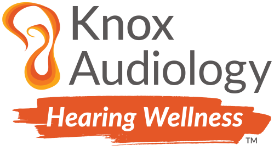What is Auditory Processing Disorder (APD)?
 Auditory Processing Disorder (APD) affects the way the ears and brain work together to understand sound. Our ability to localise sound, distinguish between similar sounds, recognise patterns in auditory information, process acoustic signals over time, and perceive a target sound amidst competing or degraded auditory signals are all part of auditory processing. When a child has APD, it may seem as if they have a hearing loss, although their peripheral hearing is normal.
Auditory Processing Disorder (APD) affects the way the ears and brain work together to understand sound. Our ability to localise sound, distinguish between similar sounds, recognise patterns in auditory information, process acoustic signals over time, and perceive a target sound amidst competing or degraded auditory signals are all part of auditory processing. When a child has APD, it may seem as if they have a hearing loss, although their peripheral hearing is normal.

Difficulty concentrating and paying attention can be an indicator of Auditory Processing Disorder.
Recognising the Signs and Symptoms of APD
With 2-5% of school-age children affected, Auditory Processing Disorder (APD) is often misunderstood and misdiagnosed due to its overlapping symptoms with other developmental concerns such as Attention Deficit Hyperactivity Disorder (ADHD), dyslexia, and Autism Spectrum Disorder (ASD). Common signs include:
- Listening difficulty in background noise including easily fatigued in social situations or distracted when there is other noise present
- Difficulty following instructions
- Struggling in academics including spelling, writing, reading comprehension, and maths
- Slow responses
- Difficulty with short-term memory
- Asking for repeats
- Trouble locating where sounds are coming from
- Other behavioural concerns, e.g. ADHD, ASD, etc.

Diagnosing APD
At Knox Audiology, our qualified clinicians assess your child’s auditory processing skills through a range of assessments. From as young as 3.5 years old to late adulthood, these evaluations may include two or more of the following:
- Hearing Test (ages 3.5+): An assessment to check a child’s or adult’s ability to hear sounds of different pitches and loudness.
- Auditory Skills Assessment (ages 3.5+): This comprehensive assessment identifies concerns in three domains: Speech Discrimination, Phonological Awareness, and Nonspeech Processing.
- Phonemic Synthesis Picture Test (ages 3.5-7): This task assesses phonemic awareness, decoding, and tolerance fading memory to identify concerns related to speech articulation, receptive language, phonics, and reading word accuracy.
- Acoustic Pioneer’s Feather Squadron (ages 5+): An iPad-based assessment using calibrated headphones to test lateralization, tonal-pattern temporal processing and memory, rapid tones and speech, non-linguistic double-dichotic stimuli, word memory, dichotic double-words, and speech-in-noise processing skills.
- Central Test Battery (ages 7+): Following Jack Katz’s Buffalo Model, we assess the four domains of auditory processing:
- Decoding: The ability to quickly and accurately recognise speech and non-speech sounds.
- Auditory Hypersensitivity (Tolerance-Fading Memory): Describes how individuals understand or tolerate speech in background noise using short-term memory.
- Organisation: Denotes the ability to maintain a proper sequence and order of information.
- Integration: The most complex domain involving combining information across different processing centers to integrate auditory and visual cues.
